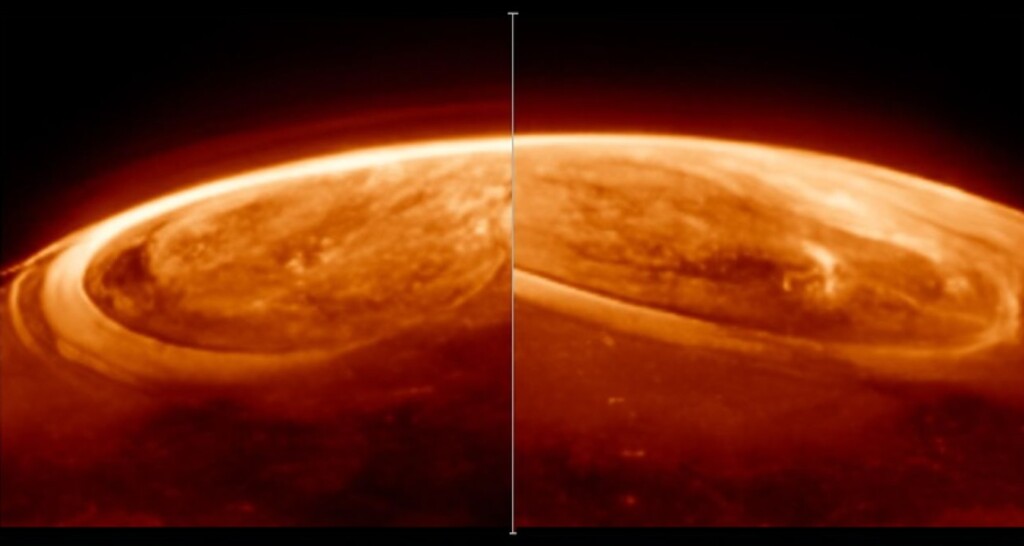 Auroras on Jupiter –Credit: NASA’s Webb telescope, ESA, CSA-Jonathan Nichols / Mahdi Zamani
Auroras on Jupiter –Credit: NASA’s Webb telescope, ESA, CSA-Jonathan Nichols / Mahdi ZamaniUsing the James Webb Space Telescope, scientists have photographed the auroras of Jupiter, revealing a host of details previously unknown to science.
Naturally, the aurora on our solar system’s largest planet is hundreds of times brighter and more energetic than our own Northern and Southern lights, and the findings from Webb will help scientists understand better how the gas giant’s atmosphere is heated and cooled.
Fundamentally, aurorae are magnetic phenomena; caused by interactions with charged particles clustering around a planet’s magnetic poles. Earth’s aurorae are caused when energetic particles released by the Sun collide with the magnetosphere and are driven to the poles where they excite localized gases that glow in a variety of colors.
Jupiter on the other hand is so large that it grabs charged particles from all over its spatial environment, including those from the solar wind. It also gets a substantial amount of these particles from its own moon Io, the most volcanically-active body in the solar system, and the fourth largest moon.
Images with James Webb’s NIRCam instrument show giant, fiery-colored clouds of charged particles emitting trihydrogen cation. A cation is a smaller version of a normal atom measured via the size of it’s electron cloud. It’s one of the most abundant ions in the universe.
Jonathan Nichols from the University of Leicester in the United Kingdom, led the team which used both Webb and the Hubble Space Telescope to image the aurora, the resulting study from which was published in Nature.
SOLAR SYSTEM MARVELS: Largest-Ever Planetary Spacecraft Set for Launch Towards Jupiter to Study the Ocean Moon of Europa
“What a Christmas present it was—it just blew me away!” shared Nichols. “We wanted to see how quickly the auroras change, expecting them to fade in and out ponderously, perhaps over a quarter of an hour or so. Instead, we observed the whole auroral region fizzing and popping with light, sometimes varying by the second.”
The team also uncovered some unexplained observations in their data.
“What made these observations even more special is that we also took pictures simultaneously in the ultraviolet with NASA’s Hubble Space Telescope,” added Nichols.
AURORA PHOTOS: Neptune’s Long-Hidden Auroras Are Captured for the First Time–While Revealing a New Mystery
“Bizarrely, the brightest light observed by Webb had no real counterpart in Hubble’s pictures. This has left us scratching our heads. In order to cause the combination of brightness seen by both Webb and Hubble, we need to have a combination of high quantities of very low-energy particles hitting the atmosphere, which was previously thought to be impossible. We still don’t understand how this happens.”
The team now plans to study this discrepancy between the Hubble and Webb data and to explore the wider implications for Jupiter’s atmosphere and space environment.
WATCH a video explanation below…
SHARE These Great Images Of The Mighty Jupiter And His Aurora…
Source link

